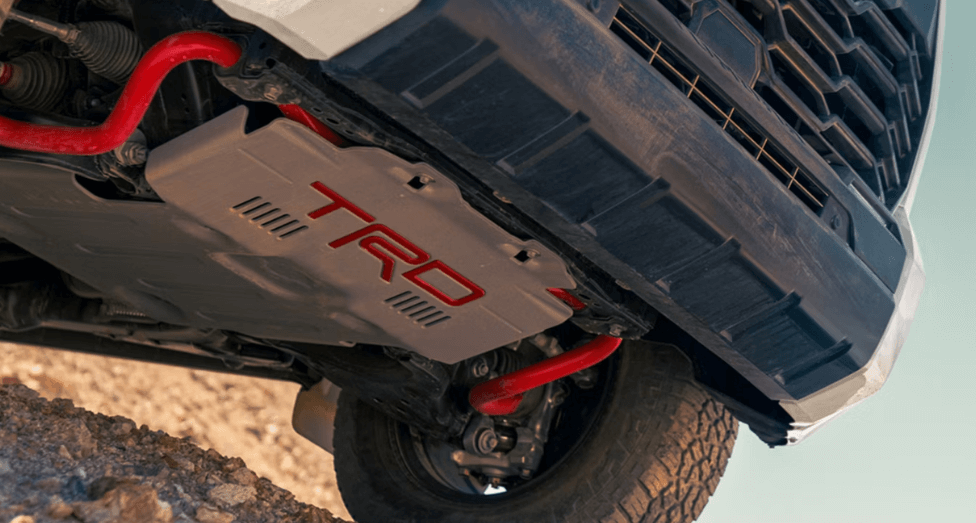When Toyota Means Business: TRD’s Journey from Dirt Tracks to Victory Lane
Walk into any Toyota dealership today and you’ll see TRD badges splashed across trucks and SUVs. But those three letters carry decades of racing history behind them. Toyota Racing Development has spent nearly 70 years proving that reliable daily drivers can also be absolute beasts on the track. What started as a scrappy effort to prove Japanese engineering could compete globally has grown into one of motorsport’s most respected names.
- TRD began in 1957 when Toyota entered the brutal Round Australia Rally with a stock Toyota Crown, finishing 47th out of 86 entries and proving Japanese cars could handle punishment.
- Today’s TRD competes across NASCAR, IMSA, NHRA drag racing, and off-road series while developing performance parts that trickle down to consumer vehicles.
- The division has grown from purely racing to creating street-legal performance vehicles, including everything from Tacoma pickups to the rally-bred GR Corolla hot hatch.
Racing Roots Run Deep
Picture this: 1957, and Toyota wants to make a splash on the world stage. They enter a 17,000-kilometer endurance race that circles the entire Australian continent. The car? A basically stock Toyota Crown sedan. Out of 87 entries, only 52 finished. Toyota crossed the line in 47th place, which doesn’t sound impressive until you realize this proved that Japanese engineering could survive anything the world threw at it.
That moment lit a fire. Toyota established a motorsport division called Toyota Sports Corner, later shortened to TOSCO, which eventually became Toyota Racing Development in 1976. The company threw itself into every racing discipline imaginable. Rally raids in the Middle East. Circuit racing in Japan. Eventually, Group C endurance racing where they went toe-to-toe with Porsche.
The strategy was simple: win on Sunday, sell on Monday. And it worked. Every trophy case success translated to showroom credibility. When Ivan “Ironman” Stewart started demolishing off-road competitions in TRD-prepped trucks during the 1980s and 90s, Tacoma sales went through the roof. People wanted what they saw winning.
Today’s Racing Portfolio
Fast forward to 2025, and TRD’s racing operation looks like a motorsport buffet. They’re running NASCAR trucks with drivers like Corey Heim, who set records last season with six wins. The IMSA program with Lexus RC F GT3 cars just won the 12 Hours of Sebring. There are NHRA Top Fuel dragsters, off-road trophy trucks, and even a driver development program grooming the next generation of racers.
The NASCAR involvement deserves special attention. TRD supplies engines and technical support to Joe Gibbs Racing, one of the sport’s powerhouse teams. Christopher Bell finished in the top five of Cup Series standings for three straight seasons. That’s not luck. That’s engineering excellence combined with decades of racing knowledge.
But here’s what makes TRD different from other factory racing programs: they actually use the racetrack as a testing ground for street cars. The suspension tuning that helps a Tundra TRD Pro handle Baja 1000 conditions? That same knowledge gets applied to the trucks you can buy at dealerships. Racing isn’t just marketing. It’s research and development with consequences.
From Track to Street
The consumer side of TRD has exploded over the past decade. You can now buy TRD-badged versions of nearly every Toyota truck and SUV. The Tundra TRD Pro. The 4Runner TRD Off-Road. Even the Sequoia gets the treatment.
These aren’t just appearance packages with stickers and fancy wheels. TRD Pro models get Fox racing shocks, skid plates, locking rear differentials, and suspension geometry refined through actual racing experience. The parts are designed to handle serious abuse, whether that’s rock crawling in Moab or bombing through desert whoops at 70 mph.
Then there’s Gazoo Racing, Toyota’s street-focused performance division that grew out of racing success at the Nürburgring. While TRD handles the trucks and off-road vehicles, GR builds road-racing machines. Watch any weekend race and you’ll see the Toyota Corolla on the racetrack proving what this engineering philosophy can accomplish. The GR Corolla packs a turbocharged three-cylinder making 300 horsepower with all-wheel drive and a six-speed manual, bringing rally-bred performance to everyday drivers.
What’s Next for TRD
Toyota Racing Development isn’t slowing down. The 2025 season is already packed with wins across multiple series. The driver development program keeps feeding talented racers into top-tier competitions. And the Costa Mesa, California facility continues developing both race engines and consumer performance parts.
What makes TRD special is the commitment to actually racing instead of just talking about it. They’re not slapping badges on vehicles and calling it performance. They’re out there every weekend, competing against the best, learning what works and what breaks. That knowledge flows directly into the vehicles people drive every day.
Whether you’re watching a NASCAR race, following trophy trucks through the desert, or test-driving a Tacoma with Fox shocks at your local dealer, you’re seeing the results of nearly 70 years of racing obsession. TRD proved that a company known for practical, reliable transportation can also build machines that win races and put genuine smiles on drivers’ faces.

